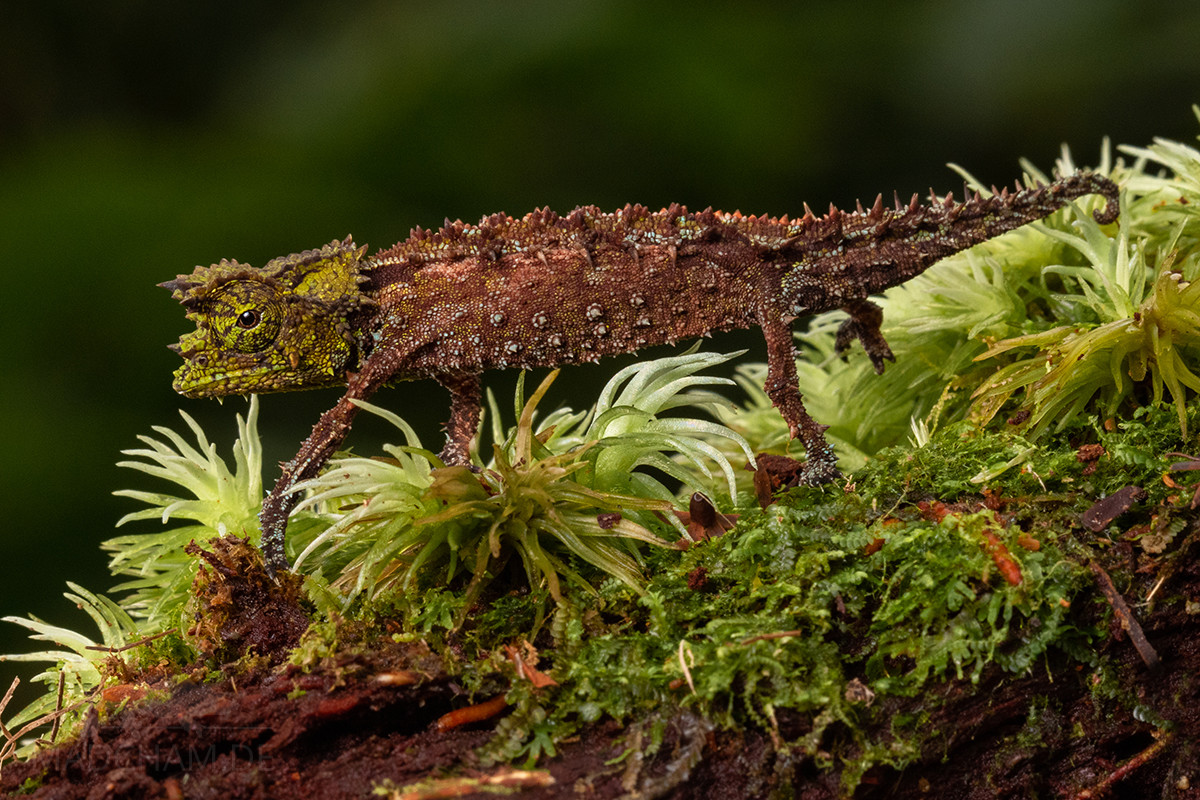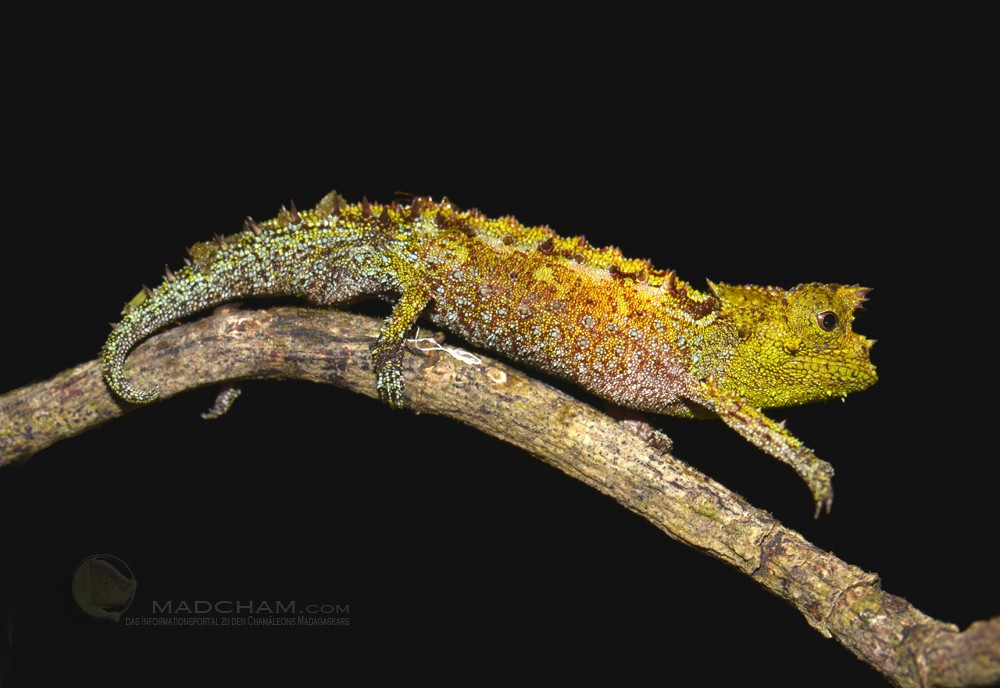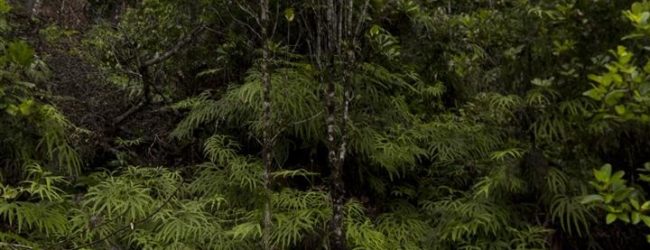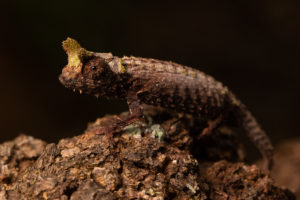no legal export possible
First description:
Origin of the species name:
Édouard-Raoul Brygoo and Charles Antoine Domergue were brought two Brookesia vadoni to the Institut Pasteur in Antananarivo in 1967 by the two entomologists Jean-Pierre Léopold Vadon and Jean-Marie Betsch. The animals had originally been collected by André Peyriéras in Masoala. The two leaf chameleons lived for two months before they died due to a lack of knowledge about keeping and feeding conditions. In 1968, Peyriéras sent two more animals to the capital of Madagascar. Brygoo and Domergue, who later both worked at the Natural History Museum in Paris (France), finally named the species after Vadon. Vadon lived in Maroantsetra since 1934 and became a French consul. He stayed in Madagascar until the end of his life and described various insect species.
Distribution:
Brookesia vadoni occurs in northeast Madagascar in tiny areas in Marojejy, Anjanaharibe-Sud, and Masoala national park. Almost all distribution areas are completely isolated from each other. They live in the foliage of the rainforest. We have been able to find this species in Marojejy, in very inaccessible canyons on an extremely limited area of less than 100 m². Despite the existing knowledge about the habitat of Brookesia vadoni, it is unbelievably difficult to find this species in the dense, wet leaf litter. It is unknown how many specimens still exist. In Masoala, only a few individual of this species has been found for years.
Appearance & size:
With a length of 57 to 58 mm, this is a middle-sized species among leaf chameleons. It has conspicuous bright colors, and no other Brookesia wears a similar color range. Brookesia vadoni males have yellow and blue spots with various shades. Additionally, both genders have nine latero-vertebral spines that are continued on the tail. They have tubercles on their chins and a distinct cone between nose and eyes, as well as well developed supraocular cones. The population in Marojejy has yellow heads, whereas the specimen in Masoala has green colored heads. The females are usually a little more inconspicuous, they wear a dark brown with yellow, arrow-like stripes on the sides. However, we have also found single females, which were in no way inferior in color to the males.
Good to know:
Colour and the spiny look are extremely extraordinary among leaf chameleons, all others are brown, beige or maximally slightly yellow.
| Jan | Feb | Mar | Apr | May | Jun | Jul | Aug | Sep | Oct | Nov | Dec | |
| Average temperature | 26 | 26 | 26 | 25 | 25 | 23 | 23 | 22 | 23 | 24 | 25 | 26 |
| Minimum temperature | 24 | 24 | 23 | 23 | 22 | 21 | 20 | 19 | 20 | 21 | 22 | 24 |
| Maximum temperature | 30 | 29 | 29 | 29 | 28 | 27 | 25 | 25 | 25 | 27 | 28 | 30 |
| Rain days | 28 | 23 | 27 | 22 | 24 | 21 | 20 | 18 | 23 | 22 | 16 | 25 |
Marojejy mainly consists of rainforest that extends over the eponymic sacred mountain at elevations of 200 to maximally 2100 m above sea level. In the highest areas, climate is cool and vegetation sparse, but most chameleons live in the warmer dense rainforest below. Marojejy has different altitude levels, each with its own species living in its own climate. In the lowest altitude level it is very warm and humid, in the middle and high altitudes it becomes a little cooler, but not less humid.
In Marojejy, there is few difference between rainy and dry season. Humidity is always very, very high. In the rainy season, precipitation is more intense with rainfalls that may last for days and sometimes are accompagnied by heavy storms. In the dry season, temperatures are a little lower, but it never becomes really cold. And it still rains almost daily. It really cannot become dry in Marojejy during "dry" season. Humidity is the main key factor of this rainforest. In 2022, we measured relative humidity on various days during the rainy season, and the data can be found below.

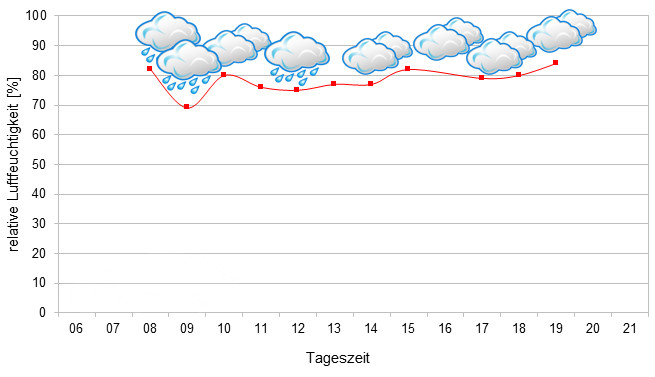


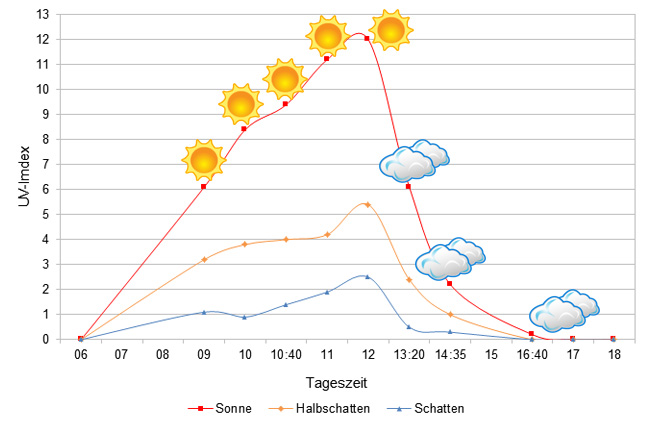
We have measured UVB data with a Solarmeter 6.5 in spring (end of March until beginning of April) at the peak of activity of chameleons in Madagascar. We always measured the values that a chameleon could maximally reach in its habitat.
Since 2022, in addition to other climate data, we have been measuring air pressure at the locations we visit in Madagascar. The following data is from different days during the rainy season. On the X-axis is the time of day or night. In Madagascar, the day begins around 6 a.m., and night falls at 6 p.m. The Y-axis shows the atmospheric pressure in hPa.


Habitat:
The following pictures show the habitat of Brookesia vadoni in Marojejy. Marojejy is a pristine rainforest with huge tree giants and endless very dense undergrowth. Pieces of bark, foliage, moss, ferns, lichens, and liana as well as lots of shrubs, everything is in this forest. The ground is partially very rocky.
Below you will find 360° images of Marojejy that we took during the rainy season. If you click on the respective image, the pictures will open in an enlarged view in a separate window. You can use the mouse to rotate in all directions. You also have the option of running the images in full-screen mode. Enjoy!








